 Your new post is loading...
 Your new post is loading...
Hillary Clinton’s “delete your account” moment was no fluke: Her tweet heard round the world was just the most viral example of her newly aggressive effort to take the 2016 fight directly to Donald Trump on his favorite social media turf.
After a long primary campaign in which Trump has used Twitter to pump out an endless stream of taunts at rivals and gobble up news coverage, Clinton’s campaign has rolled out a strategy in recent weeks to turn the presumptive GOP nominee's own words against him — with some sly sarcasm and snark. Her barbs may appear off the cuff but are sometimes planned and edited well in advance, making the Clinton-Trump war on Twitter an extension of the contrast between their distinct political styles: staff-driven and tightly scripted versus shoot-from-the-hip, aggressive and biting.
Thursday’s skirmish represented the peak Twitter moment of the 2016 campaign so far. When Trump tweeted out an attack on President Barack Obama's endorsement of “Crooked Hillary,” her campaign responded five minutes later with “Delete your account” — a time-honored social media jibe that quickly became her most popular tweet ever, with more than 420,000 retweets and over half a million likes by Friday afternoon. (That far surpassed the traffic of Trump’s infamous “Taco Bowl” tweet from Cinco de Mayo.)
Trump waited more than two hours to tweet a response to Clinton: “How long did it take your staff of 823 people to think that up — and where are your 33,000 emails that you deleted?”...
The Top Thirty Global Media Owners report is a unique ranking of the world’s largest media companies by media revenue, as estimated by Zenith. The report was launched in 2007 and was last published by Zenith in 2015. Zenith defines media revenue as all revenue deriving from businesses that support advertising, to determine which companies are most important for the marketing industry.*
There are four media giants among the top 30 global media owners – Facebook, Baidu, Yahoo and Microsoft – and all have risen up the ranking this year. Facebook has moved up from 10th place last year to 5th place this year; Baidu has moved up from 14th to 9th; Yahoo from 18th to 15th; and Microsoft from 21st to 17th. Facebook is the fastest-growing media owner in our top 30, with media revenues up 65% on last year. Baidu is second-fastest (up by 52%) and Alphabet is third (up by 17%).
Between them, the five digital giants generated US$88bn in media revenue, which is 34% of all the revenues generated by our top 30 companies, and represents 65% of the entire global internet advertising market. Their collective dominance of digital advertising means that these five companies have captured most of the gains from its rapid growth. Digital adspend has grown at an average of 18% a year for the past five years, driven by the spread of mobile technology, the rise of social media and online video, and improved advertising technology, such as programmatic buying and local real-time search. Adspend across all other media has grown by just 0.6% a year....
Google's websites are the most visited by consumers in the United States, according to recent data from comScore. The report was based on February 2016 comScore Media Metrix data for both desktop computers and mobile devices. Google's Web properties had 243 million unique visitors in February, out of a total US Internet audience of 259 million people. Facebook was the second most-visited online property by US consumers (206 million unique visitors). Yahoo sites (204 million) were third, followed by Microsoft sites (201 million), Amazon sites (172 million), and AOL (166 million)....
Today it was revealed that Vox Media, owner of The Verge, SB Nation, and Polygon has raised another $40 million of funding.
...But bigger exits are emerging: There was Huffington Post and Bleacher Report. There’s that Vice valuation. And even Swisher and Mossberg without a site are rumored to be in the $30 million valuation size — bigger than what TechCrunch sold for after six years. A pattern is forming.
The investments in Buzzfeed and Vox in particular show that well-heeled investors believe that new media can be more than just profitable lifestyle businesses buoyed by non-scalable event franchises. These guys are betting there are big public companies here.We’re seeing the same kind of transition with content that we saw with the early Web 2.0 companies like Delicious and Flickr. They sold out cheap at first as projects morphed into companies and then the next generation thought bigger....
...Today, the delivery of news is not so defined. Website, social media and digital platforms have profoundly changed not only how we get our news, but also what news we are getting. The comment section of online news stories are often more popular, or at least more entertaining, than the actual news story. The ability to “like” and “share” news now allows others to instantaneously watch or read what we are following.
As the number of online and social media offerings grows, we are sadly seeing the demise of newspapers. In 2011, 152 American newspapers ceased operations. Rapidly declining advertising revenues continue to be the industry’s core problem as the majority of us seek our news online.
Now, plans are in place for significant changes for CNN.com and CNN digital platforms. The channel will launch a redesigned website (see screenshots here) and install a back-end system that its editorial producers can utilize. This comes after the recent merging of their digital and television newsrooms into one entity. With a new emphasis on their talent, CNN anchors, reporters and writers will become more prominent, enabling the sharing of content across platforms....
Create Epic Stories with Shorthand...
New storytelling tool for journalists, writers and creative people looks very promising. It's in beta and is definitely worth exploring.
What's up with traditional media and what's buzzing in digital media? A very interesting analysis... It’s been a good week for old media. The Guardian, The Washington Post, The New York Times, and The Wall Street Journal have all done a superb job of reporting on the NSA/PRISM revelations. Unfortunately it has also been a terrible decade for them. Newspaper advertising revenue has fallen by more than half since 2007, and paywalls aren’t even coming close to covering that loss.Worse yet, nimbler competitors are doing their breakneck best to steal the audience…and they seem to be doing it well.
I recently got curious about how frequently various news sources are shared on social media, and since I couldn’t find any tool that measured quite what I wanted, I built one myself. (And I’ve spent like a hundred dollars on App Engine server costs amassing all of its data, so I hope you appreciate this.) The results were eye-opening.My handy-dandy tool, called Scanvine, tracks stories from a panoply of online sources, measures how often they’re shared, and compares and ranks them all. Guess what its leaderboard says as of this writing? None of the above are ranked in the top three. Nor the NYT, or the WSJ, or the New Yorker. Instead, third place goes to The Onion, with an average of 2000 shares per story; number two is Cracked, with 2700; and number one, at over 3000…is much-loathed BuzzFeed....
|
As of March, there were 197,800 Americans working in the “internet publishing and broadcasting” sector versus 183,200 people working for U.S. newspapers.
The BLS data goes back to 1990, and since then employment at newspapers has fallen by nearly 60 percent, having peaked in June 1990 at 457,800 people. The number of newspaper jobs has fallen consistently since then.
Digital publishing, meanwhile, has grown considerably. Throughout much of the early 1990s there were around 30,000 online publishing jobs, though that figure grew to 112,000 by 2000. Then the dot-com bubble burst and the number of jobs shrunk by about half....
Pure-play digital media companies ranked among the top 30 largest media suppliers in the world, but the list continues to be dominated by media companies that were founded on the basis of non-digital media. That’s the finding of an analysis released this morning by Publicis’ Zenith unit, ranking the volume of Madison Avenue’s biggest supply-chain players.
Google parent Alphabet continues to dominate the list at No. 1, but other than Facebook (No. 5) and China’s Baidu (No. 9) “traditional” media suppliers represent the rest of the top 10. The other pure-play digital suppliers -- Yahoo (No. 15) and Microsoft (No. 17) -- have not exactly been ascendant in recent years, although Google’s, Facebook’s and Baidu’s market power have been growing significantly as Madison Avenue reorganizes itself around the biggest-scale suppliers of digital media inventory.
To illustrate how much the media supply chain is becoming stratified -- and stratified among digital's Big 5 -- consider that the five pure-plays now represent about 19% of all global ad spending, but Google alone represents 12%, according to Zenith....
Amid widening concerns that another startup bubble has formed, digital media remains a white-hot market among the private-investment community.
Last year, venture capital poured at least $683 million into digital media companies worldwide -- more than twice the $277 million invested in 2013, according to Preqin, which tracks venture-capital investments.
That investment comes as traditional media companies like The New York Times and Condé Nast cut staff, trim costs and turn over every possible rock in search of new revenue streams. Meanwhile, digital media companies -- which have a fraction of old media's revenue and even less of their profits -- are awash in investor cash....
The 85 million unique visitors per month that BuzzFeed draws per month makes its content strategy worth examining--even if the news site's trademark articles draw a fine line between hard news and lunch-hour entertainment.
Recently named the "most social" publisher on Facebook thanks to its 16 million interactions on the platform in August, BuzzFeed is relying more on social outreach than search engine optimiziation (SEO) to rake in the views.
News organizations should embrace a social-first mindset, think about how likely it is that a piece of content will be shared on social platforms from the get-go, and stop worrying about their SEO strategy, said BuzzFeed President and Chief Operating Officer Jon Steinberg at a recent MIPCOM conference in France....
"When the average person is exposed to 3,000 advertising messages a day, you want to make sure that your advertising vehicle will get you to the target that you want," writes Advice Interactive Group.
We met with a non-profit last week in our office who have developed an incredible following on Facebook. However, their approved budget only has line items for television and radio advertisements as their overall marketing budget. This is an issue with many non-profits… directors are a bit complicit as they direct budgets based on grants that have been around for decades.
It’s not that we’re poo-pooing television and radio (we do a segment on radio), it’s just that they’re expensive mediums that need to be properly deployed as part of an overall marketing mix. Digital media offers low-cost, high yield opportunities – especially with non-profit organizations where the employees and customers are so passionate. Online media offers the opportunity for you to spark the fire, and your fans and followers to spread it. It’s truly unlike any traditional source....
Beyond distribution and a better user experience, being web friendly fits into the Flipboard business plan. The company has begun selling full-page ads mixed in with regular content like what you might see in a high-end print magazine. Larger professional publishers, including the owners of this publication, currently have revenue-sharing agreements in place for their own magazines, but the company plans to expand that to other content and curation creators.
Around two million magazines have been created since the March launch of the DIY tool, and many of the top ones are being curated by enthusiasts rather than pros — photography, maritime shipping, beer, and GIFS are some example themes. There’s a lot of additional reader attention to sell against.
But what about the publications trying to figure out their online (and mobile) business models? Why should they want Flipboard to get a piece of their precious few remaining ad dollars via alternative destinations like native apps and now its own web links?For some of them/us, the answer is going to be that they don’t have the resources to build good web sites and mobile apps anyway. For others, it’s that they can build their own products but don’t know how to monetize them well....
Despite the many miserable prognoses for the future of the media business, a few stubborn entrepreneurs still see fit to venture into content-driven companies. Among the crop of new players in media is Skift, a 10-month-old travel publication that merges content with data services while targeting a crossover audience of business readers and consumers. Skift, which is already among the top three or four online travel industry trade publications in a space that has lagged behind the times, today announced that it has raised an additional $1.1 million in seed funding, adding Advancit Capital, Ironfire Angel, Mesa+ and others to an investment roster headed up by New York’s Lerer Ventures. (Disclosure: Lerer Ventures is also an investor in PandoDaily.) The round brings Skift’s total funding to $1.5 million. Skift was brought into the world by Rafat Ali, who founded paidContent in 2002 as one of the first blog media companies. He later sold paidContent to Guardian Media, which subsequently sold the blog to GigaOm in 2012. After a couple years’ respite since selling paidContent, Ali saw an opportunity in travel, the world’s biggest industry, noticing that the publications that covered the industry had not been subjected to the same waves of disruption that, say, the tech and finance media had. Social and mobile, for instance, were still largely foreign concepts among travel industry publications, which include TTG, Travel Weekly, and Business Traveller, all of which are freighted with legacy baggage from their print magazine backgrounds....
|
 Your new post is loading...
Your new post is loading...
 Your new post is loading...
Your new post is loading...







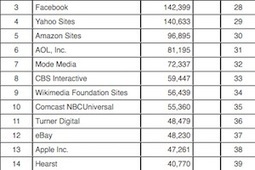

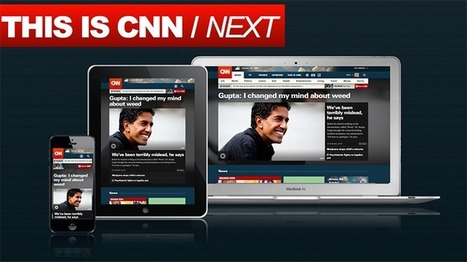



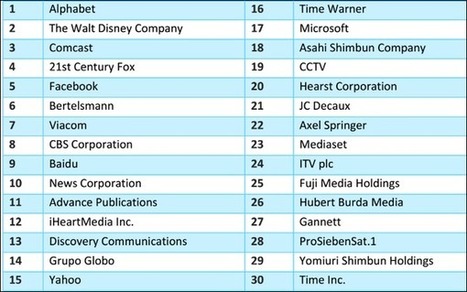
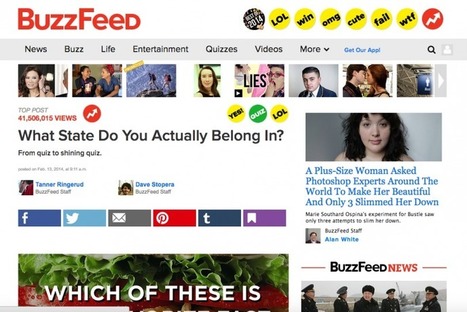


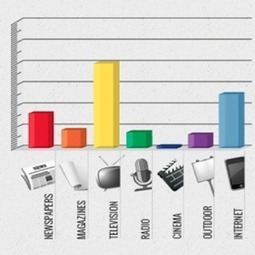







If you think it's not busy about politics on social media now just wait a couple of weeks.